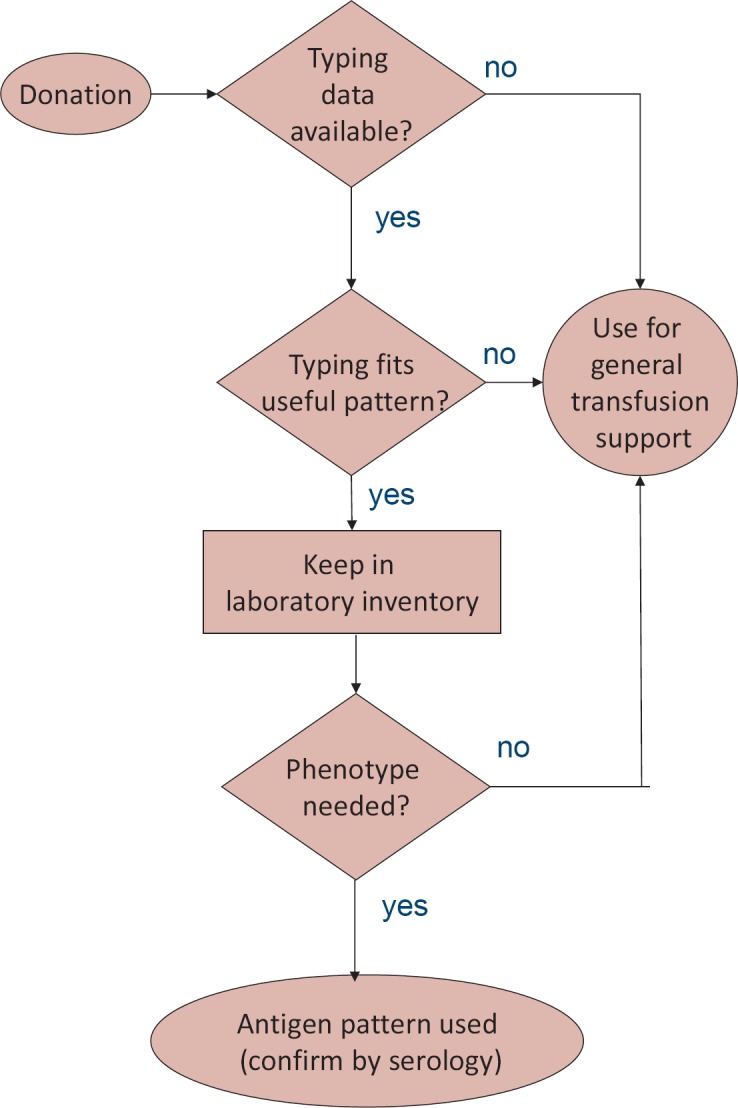Fig. 3.

Inventory management. Use of historical typing data for patient care. On release, an algorithm checks whether antigens historically determined by serology or predicted by pooled capillary electrophoresis are known. If such antigens are known, the antigen pattern is compared to ‘suitable’ antigen patterns. Units with such patterns are kept in a laboratory inventory for 1–4 weeks depending on the rarity of the expected phenotype. If used for indications necessitating antigen negative units, the predicted antigen status is confirmed by serology. If no matching patient is found, units are used for general purpose transfusions.
